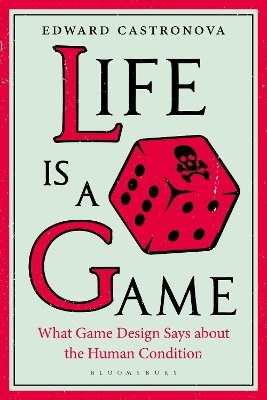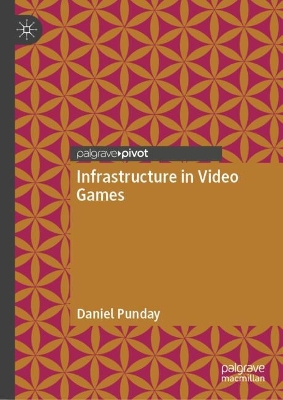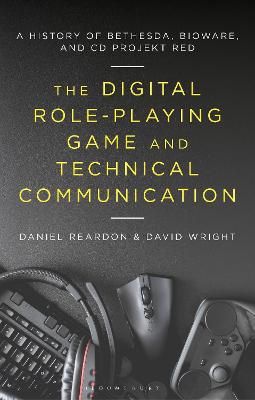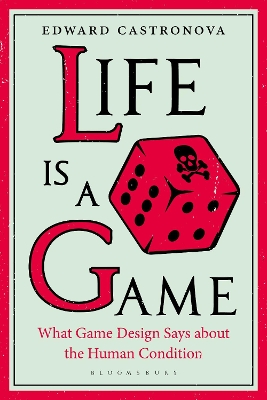Life Is a Game
 portes grátis
portes grátis
Life Is a Game
What Game Design Says about the Human Condition
Castronova, Dr. Edward
Bloomsbury Publishing Plc
09/2020
232
Mole
Inglês
9781501360619
15 a 20 dias
313
Descrição não disponível.
Introduction
a. Stances and the Strategic Layer
b. Concepts and Examples
c. Is there a Game Designer?
d. Life's Important; So Are Games
e. We Can Only Write From Who We Are
Part I: The Strategic Turn
1. Why Do Great Thinkers Keep Saying That Life is a Game?
a. The Many Similarities Between Living, Gaming, and Playing
b. Focus: Four Books that Come Close to Life, the Game
i. Hugo Rahner: Man at Play (1967/1949)
ii. Bernard Suits: The Grasshopper (1978)
iii. Michel de Certeau: The Practice of Everyday Life (1984)
iv. James Carse: Finite and Infinite Games (1987)
c. What is the Game of Life, Really?
d. The Present Moment: An Insufferable Boredom
e. How Game Design Responds to Boredom
2.The Environment of Decision
a. The natural world
b. Meaning and mind
c. Boredom and Suffering
d. The Immaterial World
3. Is this a game?
a. First features of the game of everything
i. Life as an idle game
ii. Life as Minesweeper
iii. Life as Role-Playing Game
b. What explains the similarity of life to a game?
c. How game design illuminates social processes
d. How to play
4. The Strategic Layer
a. Layers
b. Strategy and tactics
c. The strategic layer
d. On victory conditions
e. Operational goals
5. Stances
a. Choosing stances
b. Four strategic comments about philosophical commitments
c. How to evaluate a stance
d. How stances change
Part II. A Catalog of Stances
6. The Hedonistic Stance
a. Commitments
b. Victory conditions
c. Strategies
d. Assessment
7. The Excellence Stance
a. Commitments
b. Victory conditions
c. Strategies
d. Assessment
8. The Heroic Stance
a. Commitments
b. Victory conditions
c. Strategies
d. Assessment
9. The Orthodox Stance
a. Commitments
b. Victory conditions
c. Strategies
d. Assessment
10. The Mystic Stance
a. Commitments
b. Victory conditions
c. Strategies
d. Assessment
Part III. Conclusion
Bibliography
Index
a. Stances and the Strategic Layer
b. Concepts and Examples
c. Is there a Game Designer?
d. Life's Important; So Are Games
e. We Can Only Write From Who We Are
Part I: The Strategic Turn
1. Why Do Great Thinkers Keep Saying That Life is a Game?
a. The Many Similarities Between Living, Gaming, and Playing
b. Focus: Four Books that Come Close to Life, the Game
i. Hugo Rahner: Man at Play (1967/1949)
ii. Bernard Suits: The Grasshopper (1978)
iii. Michel de Certeau: The Practice of Everyday Life (1984)
iv. James Carse: Finite and Infinite Games (1987)
c. What is the Game of Life, Really?
d. The Present Moment: An Insufferable Boredom
e. How Game Design Responds to Boredom
2.The Environment of Decision
a. The natural world
b. Meaning and mind
c. Boredom and Suffering
d. The Immaterial World
3. Is this a game?
a. First features of the game of everything
i. Life as an idle game
ii. Life as Minesweeper
iii. Life as Role-Playing Game
b. What explains the similarity of life to a game?
c. How game design illuminates social processes
d. How to play
4. The Strategic Layer
a. Layers
b. Strategy and tactics
c. The strategic layer
d. On victory conditions
e. Operational goals
5. Stances
a. Choosing stances
b. Four strategic comments about philosophical commitments
c. How to evaluate a stance
d. How stances change
Part II. A Catalog of Stances
6. The Hedonistic Stance
a. Commitments
b. Victory conditions
c. Strategies
d. Assessment
7. The Excellence Stance
a. Commitments
b. Victory conditions
c. Strategies
d. Assessment
8. The Heroic Stance
a. Commitments
b. Victory conditions
c. Strategies
d. Assessment
9. The Orthodox Stance
a. Commitments
b. Victory conditions
c. Strategies
d. Assessment
10. The Mystic Stance
a. Commitments
b. Victory conditions
c. Strategies
d. Assessment
Part III. Conclusion
Bibliography
Index
Este título pertence ao(s) assunto(s) indicados(s). Para ver outros títulos clique no assunto desejado.
Game design
Introduction
a. Stances and the Strategic Layer
b. Concepts and Examples
c. Is there a Game Designer?
d. Life's Important; So Are Games
e. We Can Only Write From Who We Are
Part I: The Strategic Turn
1. Why Do Great Thinkers Keep Saying That Life is a Game?
a. The Many Similarities Between Living, Gaming, and Playing
b. Focus: Four Books that Come Close to Life, the Game
i. Hugo Rahner: Man at Play (1967/1949)
ii. Bernard Suits: The Grasshopper (1978)
iii. Michel de Certeau: The Practice of Everyday Life (1984)
iv. James Carse: Finite and Infinite Games (1987)
c. What is the Game of Life, Really?
d. The Present Moment: An Insufferable Boredom
e. How Game Design Responds to Boredom
2.The Environment of Decision
a. The natural world
b. Meaning and mind
c. Boredom and Suffering
d. The Immaterial World
3. Is this a game?
a. First features of the game of everything
i. Life as an idle game
ii. Life as Minesweeper
iii. Life as Role-Playing Game
b. What explains the similarity of life to a game?
c. How game design illuminates social processes
d. How to play
4. The Strategic Layer
a. Layers
b. Strategy and tactics
c. The strategic layer
d. On victory conditions
e. Operational goals
5. Stances
a. Choosing stances
b. Four strategic comments about philosophical commitments
c. How to evaluate a stance
d. How stances change
Part II. A Catalog of Stances
6. The Hedonistic Stance
a. Commitments
b. Victory conditions
c. Strategies
d. Assessment
7. The Excellence Stance
a. Commitments
b. Victory conditions
c. Strategies
d. Assessment
8. The Heroic Stance
a. Commitments
b. Victory conditions
c. Strategies
d. Assessment
9. The Orthodox Stance
a. Commitments
b. Victory conditions
c. Strategies
d. Assessment
10. The Mystic Stance
a. Commitments
b. Victory conditions
c. Strategies
d. Assessment
Part III. Conclusion
Bibliography
Index
a. Stances and the Strategic Layer
b. Concepts and Examples
c. Is there a Game Designer?
d. Life's Important; So Are Games
e. We Can Only Write From Who We Are
Part I: The Strategic Turn
1. Why Do Great Thinkers Keep Saying That Life is a Game?
a. The Many Similarities Between Living, Gaming, and Playing
b. Focus: Four Books that Come Close to Life, the Game
i. Hugo Rahner: Man at Play (1967/1949)
ii. Bernard Suits: The Grasshopper (1978)
iii. Michel de Certeau: The Practice of Everyday Life (1984)
iv. James Carse: Finite and Infinite Games (1987)
c. What is the Game of Life, Really?
d. The Present Moment: An Insufferable Boredom
e. How Game Design Responds to Boredom
2.The Environment of Decision
a. The natural world
b. Meaning and mind
c. Boredom and Suffering
d. The Immaterial World
3. Is this a game?
a. First features of the game of everything
i. Life as an idle game
ii. Life as Minesweeper
iii. Life as Role-Playing Game
b. What explains the similarity of life to a game?
c. How game design illuminates social processes
d. How to play
4. The Strategic Layer
a. Layers
b. Strategy and tactics
c. The strategic layer
d. On victory conditions
e. Operational goals
5. Stances
a. Choosing stances
b. Four strategic comments about philosophical commitments
c. How to evaluate a stance
d. How stances change
Part II. A Catalog of Stances
6. The Hedonistic Stance
a. Commitments
b. Victory conditions
c. Strategies
d. Assessment
7. The Excellence Stance
a. Commitments
b. Victory conditions
c. Strategies
d. Assessment
8. The Heroic Stance
a. Commitments
b. Victory conditions
c. Strategies
d. Assessment
9. The Orthodox Stance
a. Commitments
b. Victory conditions
c. Strategies
d. Assessment
10. The Mystic Stance
a. Commitments
b. Victory conditions
c. Strategies
d. Assessment
Part III. Conclusion
Bibliography
Index
Este título pertence ao(s) assunto(s) indicados(s). Para ver outros títulos clique no assunto desejado.







